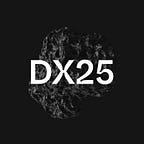How DX25’s Multiple Fee Levels Will Enhance The DeFi Experience On MultiversX
DX25 has been built to boost MultiversX’s DeFi ecosystem. A robust DEX can have multiple advantages in fostering a powerful DeFi ecosystem, such as:
- Creating a positive collaborative atmosphere between Liquidity Providers and traders.
- Allowing new projects to get easy access to liquidity.
- Increasing utility by attracting more TVL (total value locked).
DX25 brings in several exciting innovations that could position it as the premier DEX of the MultiversX ecosystem. Primary among these innovations is the concept of “multiple fee levels.” In this article, we’ll take a look at how these fee levels work.
Providing real multiple fee levels
A multiple fee level system is far more advantageous for LPs than the static fee model. Why is that the case? Consider this. The profits collected by an LP is the difference between the fees charged and the impermanent loss (IP) suffered by their position. In this equation, there are two things that one must consider:
- LPs don’t have any control over the impermanent loss.
- In a multiple-fee model, LPs could control the fees they charge on their positions.
Obviously, LPs can’t just opt for a higher fee rate all the time. They need to hit an equilibrium between the usability of the position and the fee rate chosen.
How do projects apply multiple fees?
Uniswap V3 applies multiple fees by providing multiple pools with a specific fee rate per position. So an ETH/USDC liquidity pair in Uniswap V3 will have four pools, each with a unique fee percentage — 0.01%, 0.05%, 0.3%, and 1%. Theoretically, an LP can provide liquidity to a pool with the desired fee rate.
However, there is an issue here. What’s the point of adding liquidity to a pool if nobody will use it? The profit generated is directly proportional to the fees collected, which is directly proportional to the frequency of pool usage. In practice, LPs are far more incentivized to add liquidity to the pool with the highest demand. This approach also splits liquidity into multiple pools, which can be inefficient.
How does DX25 apply multiple fee levels?
DX25 offers multiple fee levels for every single position within the same pool. Every pool has the following 8 levels, with fees ranging from 0.01% to 1.28%.
This approach has several advantages for developers, traders, and LPs.
Developers
- In other DEXs, each liquidity pair has multiple fees requiring a dedicated smart contract. This increases the cost of transactions and required processing power.
LPs
- Incur maximum profits from their positions.
- Liquidity getting fragmented in other DEX solutions leads to unequal access to trading volume. This creates an endless cycle where more liquidity -> less price impact -> more volume -> more liquidity. DX25 breaks this feedback loop and provides a more profitable environment.
Traders
- DX25 ensures efficient swaps by utilizing liquidity from all the fee tiers present within the pool. In other solutions like Uniswap V3, arbitrage occurs across the different fee tiers occasionally. In DX25, the arbitrage occurs on every single swap. This ensures the best possible price for every single trade.
Does DX25 allow you to change fee levels?
It’s not possible to change the fee tier of an existing position because:
- The positions are immutable.
- Each position has a specific ratio of tokens in it.
If you want to change your fee tier, you must close your existing position and open a new one.
Conclusion
DX25 has been created to unlock the DeFi capabilities of MultiversX. By providing innovative solutions like multiple fee levels, the DEX will economically incentivize LPs to interact with the ecosystem.
